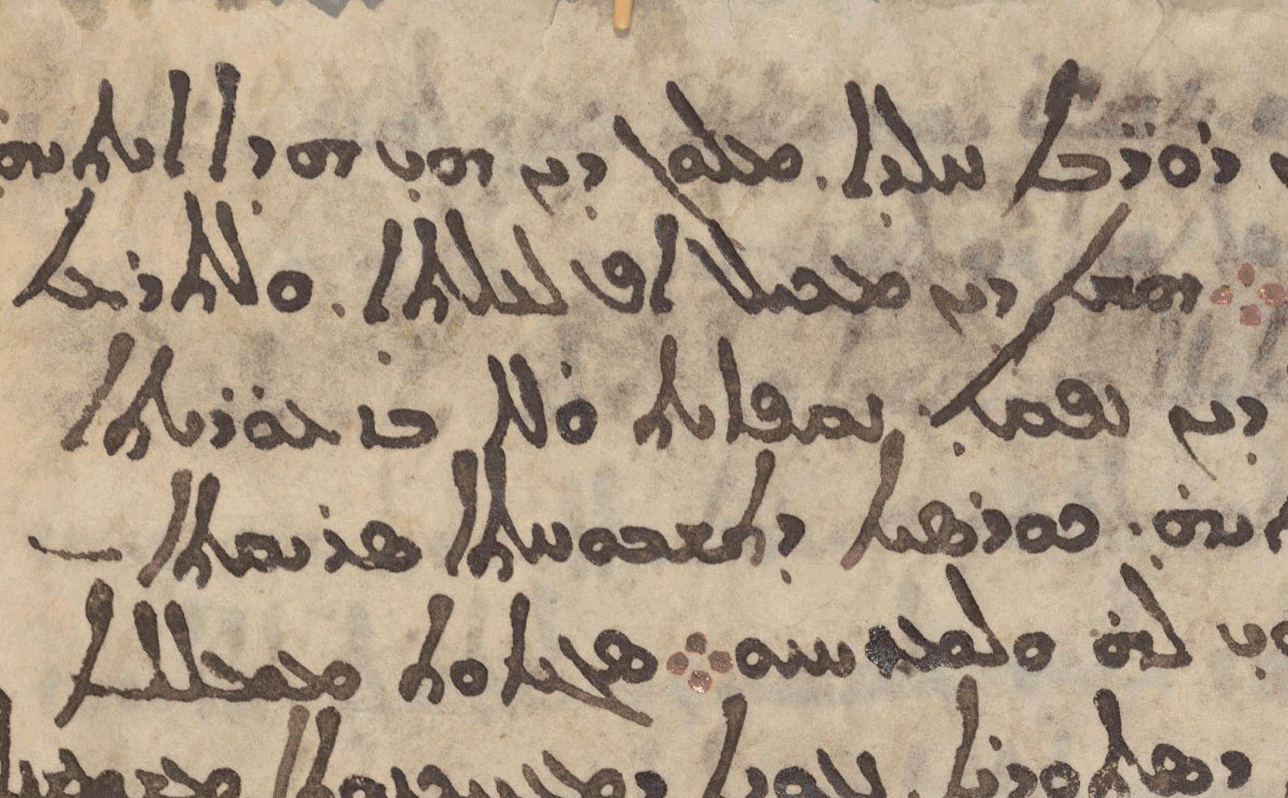History of Science
What We're Still Learning About Rosalind Franklin’s Unheralded Brilliance
Using new historical evidence, two scientists argue the female chemist was more involved in discovering DNA's structure than she got credit for
Henrietta Lacks' Virginia Hometown Will Build Statue in Her Honor, Replacing Robert E. Lee Monument
Lacks' unique cancer cells were taken without consent and used for medical breakthroughs
Divers Accidentally Find a Piece of the Challenger Space Shuttle
A documentary film crew stumbled across a section of the destroyed spacecraft that measures at least 15 by 15 feet
Charles Darwin's Rare Autographed Manuscript Could Sell for $800,000
The English naturalist was responding to a magazine editor who had asked for a handwriting sample
A Medieval Manuscript Has Revealed the Oldest Known Map of the Stars
Advanced imaging uncovered part of the Greek astronomer Hipparchus’ long-lost star catalog
Breaking Down the Quantum Research That Earned Three Physicists the Nobel Prize
What they revealed could enable ultra-secure computing and new telescope technology
What You Need to Know About the History of Monkeypox
Mired in misconception, the poxvirus is endemic in certain African countries but was rarely reported in Europe and the U.S. until recently
Exhibition Explores the Art and Science of Cancer—and the Hope of a Future Without It
The Science Museum in London explores the past and future of the disease, and the resilience of its survivors
Five Things to Know About French Enlightenment Genius Émilie du Châtelet
She was brilliant and unconventional, but her life had a tragic end
Iconic Portrait of French Chemist and His Wife Once Looked Entirely Different
Jacques-Louis David's 1789 painting originally depicted Antoine and Marie Anne Lavoisier as wealthy elites, not modern scientists
Letter From 'Father of Vaccination' Edward Jenner Sold at Auction
Jenner wrote that new research 'put a stop to the sneers' of 'little minded persons'
How Mrs. Edge Saved the Birds
Meet a forgotten hero of our natural world whose brave campaign to protect birds charted a new course for the environmental movement
An Unexploded WWII Bomb Was (Safely) Detonated in England
Routine construction work near the University of Exeter unearthed the 2,204-pound device in late February
The Great Canadian Polio Vaccine Heist of 1959
A theft more than 60 years ago shows how sought-after scarce vaccine doses have been in past epidemics
Rare Doctor's Note Offers Glimpse Into Napoleon's Agonized Final Years
The 1818 missive, which describes the French statesman's failing health, recently sold at auction for $2,000
Ukraine Seeks to Designate Chernobyl as a Unesco World Heritage Site
"People should leave with an awareness of the historic significance of the place," says the country's culture minister
Hidden Microbes and Fungi Found on the Surface of Leonardo da Vinci Drawings
Researchers used new DNA sequencing technology to examine the "bio-archives" of seven of the Renaissance master's sketches
The Ten Best Science Books of 2020
New titles explore the mysterious lives of eels, the science of fear and our connections to the stars
Two Darwin Notebooks Quietly Went Missing 20 Years Ago. Were They Stolen?
Staff at Cambridge University Libraries previously assumed that the papers had simply been misplaced in the vast collections
Even in the Bolivian Amazon, Average Human Body Temperature Is Getting Cooler
A new study finds the average body temperature among Bolivia’s Tsimane people dropped by nearly a full degree in just 16 years
Page 2 of 6
:focal(1976x2166:1977x2167)/https://tf-cmsv2-smithsonianmag-media.s3.amazonaws.com/filer_public/ba/46/ba46c84b-8428-4a63-9257-b2af7c588758/gettyimages-590675971.jpg)
:focal(2742x1854:2743x1855)/https://tf-cmsv2-smithsonianmag-media.s3.amazonaws.com/filer_public/95/1a/951a2166-1675-4504-bc5a-eb987b443245/gettyimages-1234369528_1.jpg)
:focal(400x225:401x226)/https://tf-cmsv2-smithsonianmag-media.s3.amazonaws.com/filer_public/39/f8/39f860d4-69f2-4858-8db3-131af5640a34/resized_challenger_image.jpg)
:focal(2160x1440:2161x1441)/https://tf-cmsv2-smithsonianmag-media.s3.amazonaws.com/filer_public/00/44/004485d0-cb08-40b2-a8b8-621831cf7547/092322-mfm-darwin-004_1.jpg)

:focal(2933x1941:2934x1942)/https://tf-cmsv2-smithsonianmag-media.s3.amazonaws.com/filer_public/7a/33/7a33333c-2490-4ac6-b89c-898ed3a07f42/gettyimages-1243716108.jpg)
:focal(1024x790:1025x791)/https://tf-cmsv2-smithsonianmag-media.s3.amazonaws.com/filer_public/ea/1a/ea1a3aa3-62ff-4389-a6a6-fc0c179562b3/52096775365_47a17637ba_k.jpg)
:focal(4128x2752:4129x2753)/https://tf-cmsv2-smithsonianmag-media.s3.amazonaws.com/filer_public/75/48/7548b9ed-9f4c-4ffa-87a5-5d18800d7739/visitors_looking_at_sculpture_by_skellon_studio_in_cancer_revolution_at_the_science_museum__science_museum_group.jpg)
/https://tf-cmsv2-smithsonianmag-media.s3.amazonaws.com/filer/b0/e8/b0e803bb-64a4-4ac8-931c-001213934eb9/emilie_chatelet_portrait_by_latour.jpg)
:focal(411x289:412x290)/https://tf-cmsv2-smithsonianmag-media.s3.amazonaws.com/filer/eb/8d/eb8d6a10-1db4-49f6-a12c-570c79729959/fdasfsdfdsaf.jpg)
/https://tf-cmsv2-smithsonianmag-media.s3.amazonaws.com/filer/d3/6c/d36c57f5-5d0c-4288-988f-9940fed6ce56/jenner_letter.jpg)
/https://tf-cmsv2-smithsonianmag-media.s3.amazonaws.com/filer/a6/1e/a61e1150-b254-4b0d-9c74-79a6a7cf6d9b/socialmedia.jpg)
:focal(441x269:442x270)/https://tf-cmsv2-smithsonianmag-media.s3.amazonaws.com/filer/a0/68/a0684c87-56eb-431c-866a-6d47321a5cdb/bomb.jpg)
/https://tf-cmsv2-smithsonianmag-media.s3.amazonaws.com/filer/1a/a1/1aa1688f-6fbd-420d-9ddd-dee724b8a201/gettyimages-3133951.jpg)
:focal(1757x1068:1758x1069)/https://tf-cmsv2-smithsonianmag-media.s3.amazonaws.com/filer/62/62/6262ca1b-4f3c-4649-a494-ef841c29f4f1/death_of_napoleon.jpg)
:focal(1279x853:1280x854)/https://tf-cmsv2-smithsonianmag-media.s3.amazonaws.com/filer/9f/2b/9f2bbfda-5c33-4262-8151-cb4ead4f8925/cernobyl_11.jpg)
:focal(906x663:907x664)/https://tf-cmsv2-smithsonianmag-media.s3.amazonaws.com/filer/71/56/71568228-8f60-4d38-ac53-6f22c096f80a/frontiers-microbiology-microbiome-original-artwork-leonardo-da-vinci.jpg)
/https://tf-cmsv2-smithsonianmag-media.s3.amazonaws.com/filer/54/df/54df4d59-757e-42d6-9e42-ed730097fc59/science_smithsonianmagazine_bookslist_2020_copy.jpg)
:focal(596x300:597x301)/https://tf-cmsv2-smithsonianmag-media.s3.amazonaws.com/filer/65/5d/655ddee5-e1e1-4e19-8088-a2cc846c9f61/screen_shot_2020-11-24_at_13508_pm.png)
:focal(1766x1150:1767x1151)/https://tf-cmsv2-smithsonianmag-media.s3.amazonaws.com/filer/0c/73/0c73fd4a-c441-4658-9dd7-da82cd52b6c4/thermometer_unsplash_markus-spiske-s-unsplash.jpg)